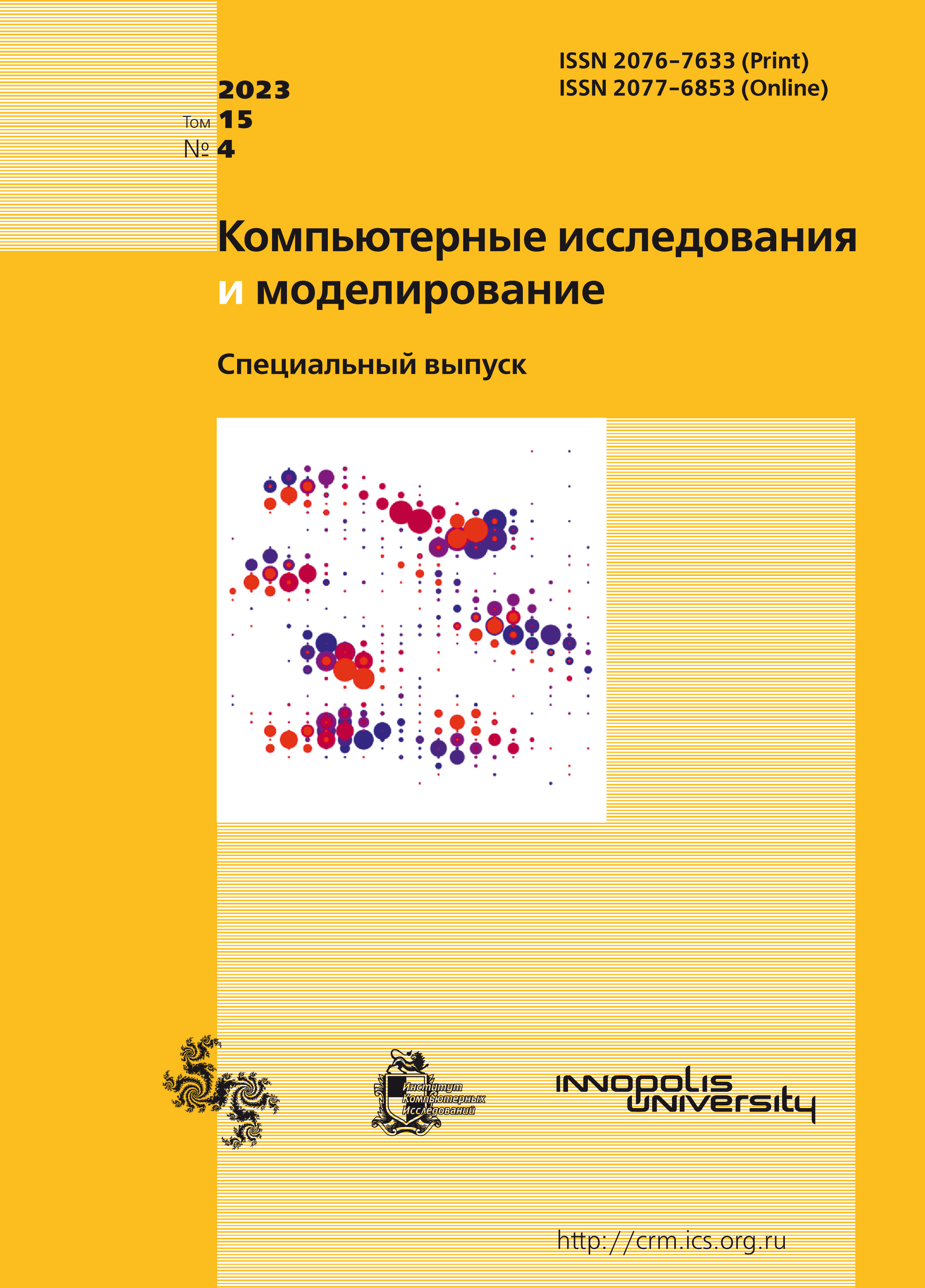All issues
- 2025 Vol. 17
- 2024 Vol. 16
- 2023 Vol. 15
- 2022 Vol. 14
- 2021 Vol. 13
- 2020 Vol. 12
- 2019 Vol. 11
- 2018 Vol. 10
- 2017 Vol. 9
- 2016 Vol. 8
- 2015 Vol. 7
- 2014 Vol. 6
- 2013 Vol. 5
- 2012 Vol. 4
- 2011 Vol. 3
- 2010 Vol. 2
- 2009 Vol. 1
Simulation of turbulent compressible flows in the FlowVision software
 pdf (2683K)
pdf (2683K)
Simulation of turbulent compressible gas flows using turbulence models $k-\varepsilon$ standard (KES), $k-\varepsilon$ FlowVision (KEFV) and SST $k-\omega$ is discussed in the given article. A new version of turbulence model KEFV is presented. The results of its testing are shown. Numerical investigation of the discharge of an over-expanded jet from a conic nozzle into unlimited space is performed. The results are compared against experimental data. The dependence of the results on computational mesh is demonstrated. The dependence of the results on turbulence specified at the nozzle inlet is demonstrated. The conclusion is drawn about necessity to allow for compressibility in two-parametric turbulence models. The simple method proposed by Wilcox in 1994 suits well for this purpose. As a result, the range of applicability of the three aforementioned two-parametric turbulence models is essentially extended. Particular values of the constants responsible for the account of compressibility in the Wilcox approach are proposed. It is recommended to specify these values in simulations of compressible flows with use of models KES, KEFV, and SST.
In addition, the question how to obtain correct characteristics of supersonic turbulent flows using two-parametric turbulence models is considered. The calculations on different grids have shown that specifying a laminar flow at the inlet to the nozzle and wall functions at its surfaces, one obtains the laminar core of the flow up to the fifth Mach disk. In order to obtain correct flow characteristics, it is necessary either to specify two parameters characterizing turbulence of the inflowing gas, or to set a “starting” turbulence in a limited volume enveloping the region of presumable laminar-turbulent transition next to the exit from the nozzle. The latter possibility is implemented in model KEFV.
Copyright © 2023 Zhluktov S.V., Aksenov A.A., Kuranosov N.S.
Indexed in Scopus
Full-text version of the journal is also available on the web site of the scientific electronic library eLIBRARY.RU
The journal is included in the Russian Science Citation Index
The journal is included in the RSCI
International Interdisciplinary Conference "Mathematics. Computing. Education"






